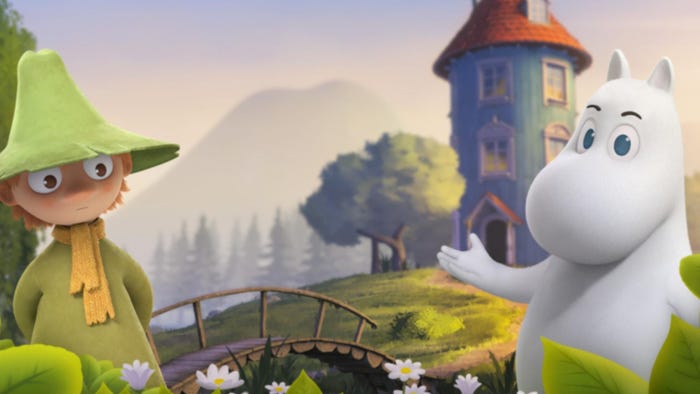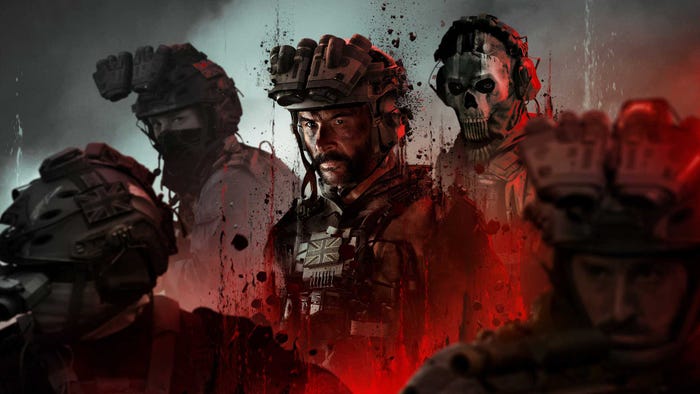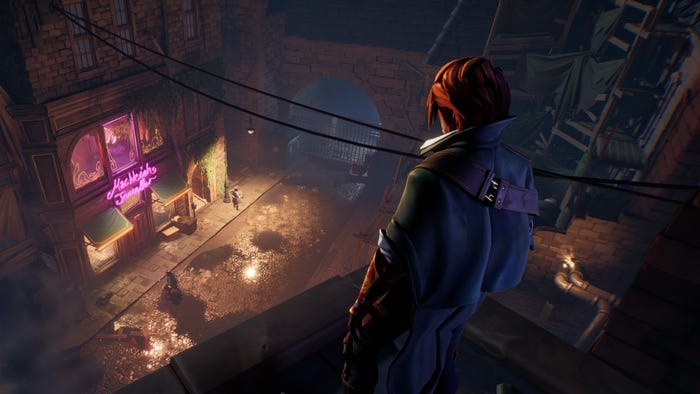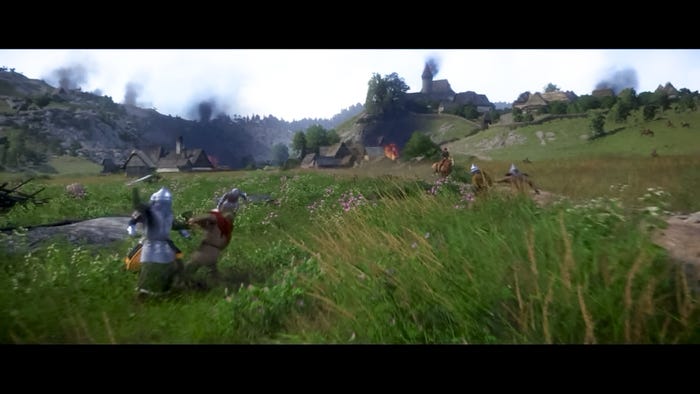
Featured Blog | This community-written post highlights the best of what the game industry has to offer. Read more like it on the Game Developer Blogs.
In his paper, Jonathan Frome describes 2 player roles and 4 emotion types. I present them in my own interpretation and make a case study on how the model applies to Bloodborne.

In his paper “Eight ways videogames generate emotions”, Jonathan Frome describes 2 player roles and 4 emotion types. In what follows I present them in my own interpretation, following with a case study on how the model applies to the game Bloodborne.
Player roles
The player roles are those of the observer-participant and the actor-participant. The observer-participant applies to situations where the player interacts with the game without influencing it, like watching a cutscene, going through the lore, walking around the environment, listening to an NPC and so on. The actor-participant interacts with the game and influences the game, be it by engaging in combat with an enemy, selecting a choice in a multi-option dialogue, solving a puzzle and so on - as the result of his action, the game is changed compared to its state from before the action. Both player roles have the player participate in the game, in its environment or setting, but differ in how they influence the game state. To simplify, I’ll use the terms observer and actor.
Emotion types
The emotion types that Frome describes are game, narrative, artifact and ecological. Game emotions and narrative emotions are pretty self-explanatory: game emotions mainly relate to how you perform in the challenge that the game poses and narrative emotions relate to characters, story and setting and are very similar, if not the same, to the types of emotion you can experience in other forms of media such as movies or books.
Artifact emotions relate to responses triggered by how a certain game is made - they can be appreciation or frustration towards an art style, a repetitive sound, an elegant or cluttered interface and so on. They aren’t triggered by what’s happening in the game world, but by the actual work of art that the game is and how it represents its content. These usually are emotions of evaluation targeted towards the creators of the artifact.
Ecological emotions are related to the responses we get from game elements as if we were interacting with them in the real world. While there is a risk of confusing them with narrative emotions, the difference is that ecological emotions refer to how a game character could create feelings of attraction towards her because of how she looks, as if she was real, while the narrative emotions towards her are more likely to be targeted to how her character was written, what she does, how she interacts with her medium and so on. Another example is feeling genuine fear emotions because of a monster in a game, even though there is no logical reason to be afraid of it - even to the extent that it can’t even affect your game character, this emotion might still be triggered. A third example would be how we tend to sometimes flinch when someone in the game gets hit, it doesn’t matter if it is our avatar or not.
While game emotions are specific to games, my opinion is that the other 3 types of emotions can be found in other media as well, narrative ones being evidently found in movies and books, artifact emotions can be found in mostly anything and ecological emotions primarily in movies and maybe also in very descriptive books.
One thing of note is that the same stimuli can generate more type of emotions depending on how we perceive it: we can get artifact emotions from focusing on how that stimuli was created; ecological emotions because of what the stimuli represents and how it would make us feel if it was in the real surrounding world; narrative emotions if we can have any kind of a story hint from it, which is very easy, we have a natural recognised tendency to see stories even in places where there is no intent for it; game emotions if our actions had an influence in creating the stimuli and it affects our status, performance or progress.
Bloodborne - A case study
Combining the 2 player roles with the 4 emotion types we get the 8 inputs that games use to generate player emotions. I will use Bloodborne as a case study to exemplify each. Bloodborne is a 3rd person action survival game, with a lot of lore, immersive atmosphere, engaging gameplay and a pretty high difficulty curve - no free promotion intended. I will try to use only minor spoilers so it should be safe for everyone to read ahead.
1. Game events can trigger game emotions for an observer player. Although he doesn’t have influence over what happens, the anxiety he feels when watching the introduction of a boss in Bloodborne or the desire to defeat a particularly menacing looking enemy are emotions related to his game progression that are triggered while he is only acting as an observer. Bosses in particular are triggered without you having the knowledge of where they are, you simply explore the world and in some locations you pass a point where an event is triggered and the bosses appear. While to the loosest extent you did interact with the world by walking, what follows is an impressive animation that can generate emotions of fear that you’ll lose progress for example - dying sends you back to the latest checkpoint and you loose what you collected in Blood Echoes, the game’s currency - or of excitement that you can finally progress further in the game.

I know the fight hasn’t started yet, but I’m probably going to die
2. Gameplay can trigger game emotions for an actor player. Fighting an enemy is the most common game emotion trigger in Bloodborne, but not the only one. Increasing the stats of your weapon is an action that can lead to increase in confidence or hope to progress further. Dying can lead to frustration, defeating a powerful enemy can lead to joy, receiving a powerful blow that leaves you with few health points can cause panic, but all these emotions are related to the challenge that the game poses and how we as an actor player progress through it. Another good example is timing a heavy double swipe attack with the axe to not only deal a good amount of damage, but to also avoid the incoming attack from the enemy. This performance can lead to a bunch of emotions, such as pride and confidence.

That was one hit away from dying
3. Narrative situations can trigger narrative emotions for the observer player. This are very easy to notice, they can be a cutscene, as the one from first meeting the boss Father Gascoigne, a lore excerpt such as an item description or even the Doll from the Hunter’s Dream being sad and lost in thought. Simply by observing, the first can make you feel fear or disgust, the second can make you feel curious and the third can make you feel empathy or the desire to help.

Now I’m curious who this Ludwig is
4. Roleplay can trigger narrative emotions for the actor player. Roleplaying is incredibly easy to do in video games. In Bloodborne for example you can roleplay a master hunter that is set to destroy all beasts in his path, you can roleplay the saviour who is trying to save as many helpless people as he can, maybe even the underdog that has no chance at first sight, by choosing the weakest starting character. And these examples are the obvious ones. There is countless more subtle roleplaying, such as how you respond to a question or how you engage an enemy. In each situation, emotions are most likely to be triggered, especially since roleplaying puts you even more in the avatar’s shoes and immerses you one layer deeper into the game’s world. And if you take into account that this particular world isn’t that permissive and supporting in whatever your objectives might be, disappointment, frustration, sadness or regret are very likely to be triggered.

I’m roleplaying a psychopath and it feels good…
5. A sensory environment can trigger ecological emotions for an observer player. The dark mood will likely create a feeling of tension as if you were in that environment physically. A shriek from a distant enemy in the virtual world might for a moment make you want to turn your head around to look in the room and make sure that it wasn’t from the real world, even if you know that’s not possible. Getting picked up suddenly by an invisible hand and then thrown to the ground will briefly make you feel afraid of the fall. But the most obvious emotion that you will feel is fear or anxiety, simply by observing enemies - while not all, some will definitely relate to some inner fear or phobia that will make you be more afraid of some pixels than logic would dictate.

Not for me, for sure, but for some he might be scary
6. Proprioception - that’s a mouthful - can trigger ecological emotions for the actor player. Looking down from an abrupt cliff where there doesn’t seem to be anything but a long fall can shortly make you feel a bit dizzy, especially if you have fear of heights in real life. Your body feels the same as if you’d fall in the real world, even if you are in no danger of that happening - unless you are too close to the edge of the couch. The same happens to me when climbing a very long ladder in the game, I get a similar feeling of discomfort that I’d get if I was physically doing that. Getting hit by an enemy can make you flinch or even duck as if the hit would happen for real. Your body’s physical reactions are disconnected from the brain’s logic, ignoring that none of those things can happen to you.

I always feel nervous doing that
7. Design can trigger artifact emotions in an observer player. Simply by looking at Bloodborne’s graphics, you can like them or not, you can appreciate the work put into the modelling or not and so on. The same for the music for example, aside from liking it or not or feeling that it is appropriate for the world or in connection to what’s happening as a dynamic, you can also feel disapproval for how loud it is or even for its technicalities. The interface is another obvious example that can trigger emotions simply by looking at it - you can feel overwhelmed by the amount of data in the inventory, you can be pleased by its layout or you can get frustrated by not finding an information you think should more obvious. You can even experience shame the moment you realize that information was staring at you the whole time. The combat systems or attack patterns can frustrate you because of how they are built and the maths behind them. All these emotions are triggered by observing the game as an artifact, an object if you will, and analysing how it’s made, not what it represents. And most likely all these emotions will be targeted towards Bloodborne’s creators: why did they make that choice for the save system or why do they take away all your Blood Echoes when you die, those soulless developers!

After 10 walkthroughs, I know what these mean!
8. Artistry can trigger artifact emotions in an actor player. Bloodborne allows the player to express himself artistically for example by allowing him to customise his character at the beginning of the game. Artifact emotions get generated based on the result and the minor successes or failures during the process. You can feel pride in the result, you can identify with it or you can even like it - how many don’t try to use this customisation tools to create a “perfect love interest”? You can feel frustrated by the limitations or by the abundance of options. You can even create an old character and feel a little pity for it. The game as an artifact is what triggers the emotions because if it provides you with only what you feel are ugly options, you resent the game, while if it is built in such a way that it’s very likely that whatever you make will look cool, you’ll appreciate the game systems for making an artist out of you, even if you know the truth that you’re like the dog that doesn’t know what it’s doing.

Hey, he's not ugly, it’s the game’s lack of options fault, ok?
Conclusions
The purpose of this article is to apply Jonathan Frome’s model for emotion inputs in video games to a modern game, Bloodborne, and see if it holds. While the result is far from anything scientific, I feel that the model and its vocabulary could be used in analysing how games in general can trigger emotions and can improve communication on the subject.
As I aim to dive deeper into the connection between emotions, video games, short and long term engagement and ultimately what makes a fan, I feel that this is a good foundation work that can be used on my so-called research. Hopefully with follow-up articles the findings will become more and more useful.
Please leave your thoughts if you wish, be it supportive or critical. I’m well aware that this topic can easily get subjective, so I’m very open to be laughed at or to be shun from the gamedev community. :)
References
Jonathan Frome, Eight ways videogames generate emotion, http://www.digra.org/wp-content/uploads/digital-library/07311.25139.pdf
From Software, Bloodborne, https://www.playstation.com/en-us/games/bloodborne-ps4/
Awesome people on the internet, Screenshots, http://www.google.com
Read more about:
Featured BlogsAbout the Author(s)
You May Also Like








